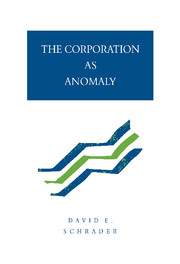Book contents
- Frontmatter
- Contents
- Preface
- Introduction
- 1 The hidden change in economic theory
- 2 Four views of scientific change
- 3 A glance at the history of economic theory
- 4 Agreement and disagreement within the tradition
- 5 Theories of the firm
- 6 Confusions and problems with the marginalist view
- 7 The shape of the large managerial corporation
- 8 The theoretical impact of a better theory of the firm
- Notes
- Bibliography
- Index
6 - Confusions and problems with the marginalist view
Published online by Cambridge University Press: 10 December 2009
- Frontmatter
- Contents
- Preface
- Introduction
- 1 The hidden change in economic theory
- 2 Four views of scientific change
- 3 A glance at the history of economic theory
- 4 Agreement and disagreement within the tradition
- 5 Theories of the firm
- 6 Confusions and problems with the marginalist view
- 7 The shape of the large managerial corporation
- 8 The theoretical impact of a better theory of the firm
- Notes
- Bibliography
- Index
Summary
I remember many years ago, in the closing and very unpopular phase of U.S. involvement in Vietnam, that people would occasionally joke about that involvement, saying, “It's a crummy little war, but we should be thankful for it since it's the only war we've got.” At times one senses a similar attitude toward the marginalist theory of the firm, even among its most resolute defenders. One simply does not see the marginalist theory of the firm proclaimed as one of the glowing centerpieces of marginalist economic analysis. Rather, that theory has been the subject of serious criticism, examination and reexamination, and careful defense almost from its earliest days (at least if we are to agree with Machlup in finding the theory's infancy in the early work of Chamberlin and Robinson). The first serious criticism in England came in 1939 with Hall and Hitch's “Price Theory and Business Behavior.” On this side of the Atlantic a spirited battle over the value of the marginalist theory of the firm, a battle that seems to have continued with only periodic lulls since its inception, started in the pages of the American Economic Review in 1946 and 1947.
Machlup concludes his famous defense of marginalist theories of the firm very modestly: “I conclude that the choice of the theory has to depend on the problem we have to solve…. Deficiencies in marginal analysis have been shown and recognized.” The customary defense of the marginalist theory of the firm is twofold. According to the first, that theory succeeds well in explaining the very limited set of problems to which it wishes to address itself.
- Type
- Chapter
- Information
- The Corporation as Anomaly , pp. 110 - 130Publisher: Cambridge University PressPrint publication year: 1993



